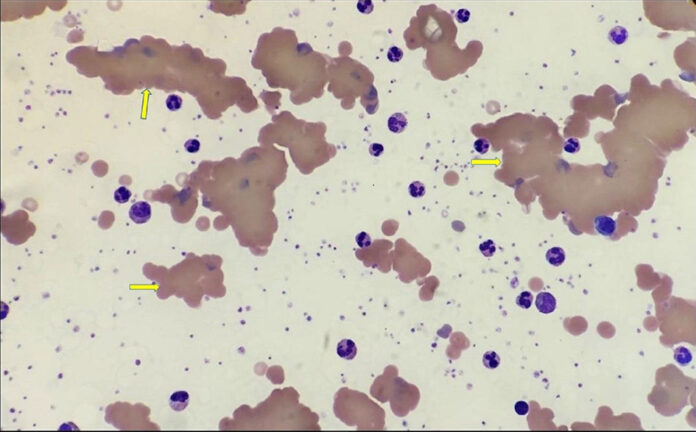Mycoplasma pneumonia is a human pathogen that spreads from person to person through aerosols. Multiple case reports have been reported for M. pneumonia in children with pulmonary embolism complications. However, cases with severe hemolytic anaemia are rare.
This case of a 27-year-old female who presented to the ER with a history of unproductive cough for ten days, which worsened two days before her admission. In addition, she had lethargy, nausea, vomiting, and felt feverish. She also noticed a change in her urine colour, which was dark. For symptomatic control, she took cough syrup. However, she was fit before her admission with no significant medical history. She occasionally drank alcohol and was a smoker with no history of drug allergies.
Examination
Doctors did a general examination, and she was alert; her GCS was 15. Moreover, she had generalized jaundice and conjunctival pallor, in addition to being hypoxic with tachycardia. Her Bp was 130/60 mm Hg and 22/min respiratory rate However, her cardiovascular examination was further unremarkable.
Her respiratory examination revealed crepitus in both lung bases and abdominal examination showed tenderness in the right upper quadrant, in addition to palpable liver. Moreover, her blood tests showed severe hemolytic anaemia and leukocytosis. Her chest imaging revealed coexisting pneumonia along with pulmonary embolism.
Critical Care Review
After her initial blood transfusion, her hemolytic anaemia worsened, and she required a critical care review. A further blood test revealed cold agglutinin hemolytic anaemia because of Mycoplasma pneumoniae infection. Doctors treated the patient with a warmblood transfusion, which improved her condition. Moreover, they gave antibiotics and steroid therapy. She also got anticoagulant therapy for six months.
Conclusion
The severe anaemia and leukocytosis make this case very rare, which made hematologic malignancy susception an initial presentation. Hence, it is necessary that clinicians emphasize prompt diagnosis and evaluation of hemolytic anaemia. In addition to using warm blood transfusion for cold agglutinin disease.




